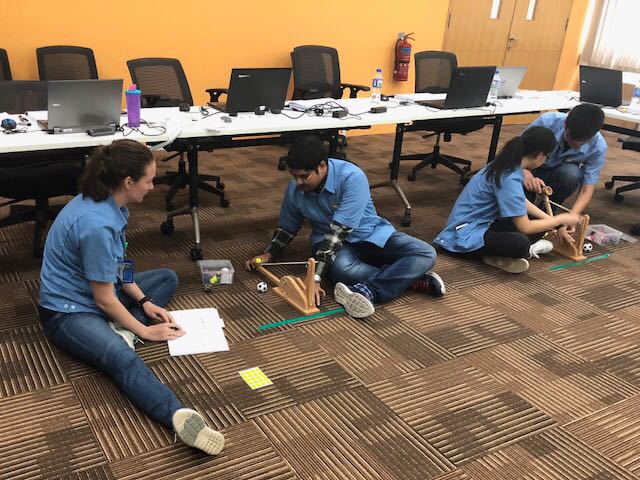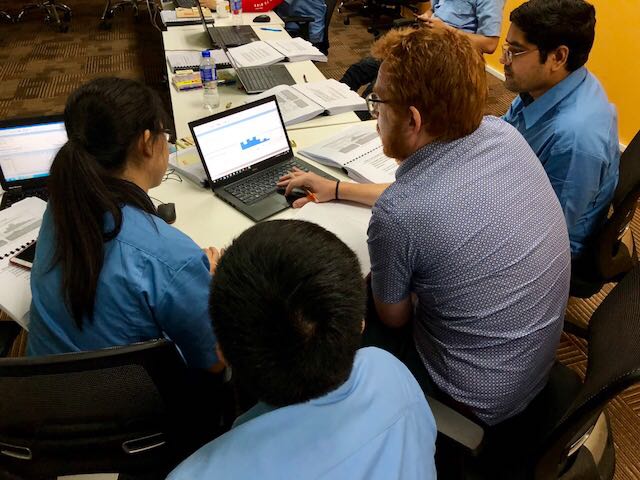

Lean Six Sigma Green Belt Training
Introduction
Congratulation for having a continuous improvement mindset by selecting Lean Six Sigma Green Belt Training as part of your upgrade training. It is not just another normal training, but a culture changing experience that would last a lifetime once you embrace it. Can you imagine what would have happened to a giant company like Toyota if they never develop the Toyota Production System? This superb Lean Six Sigma has given Toyota the edge to outperform the profit of GM, Ford and other competitors back in those days. The way to stay competitive as a company today is to do it better, faster, cheaper than all their competitors without compromising quality.
If you think Lean Six Sigma is just for manufacturing, then you have not met the eye. Once you embark on this learning journey, you will be armed with the methods and tools that will help you improve processes or productivity in many other organizations.
Training Objectives
Lean Six Sigma Green Belt Course participants will acquire
- an understanding of the fundamental knowledge of Lean Six Sigma methodology. This will enable participants to align their thoughts with the principles, concept, and approach of Lean Six Sigma.
- the skillset in applying the Lean Six Sigma tools and techniques to any improvement project. This will empower participants with the ability to work out and implement continuous improvement plan in their organization.
- The mindset of Lean Six Sigma to strive for continuous You will see things differently; treat the norm as improvement opportunities. You will want to promote Lean Six Sigma culture in your organization.
Outline
- Fundamentals of Lean Six Sigma – Principles, Concepts and Approach
- DMAIC (Define Measure Analyze Improve Control)
- Define Phase – Identify Six Sigma Projects using the Project Charter with the Project Metrics, Risk Analysis, SIPOC and CE Matrix
- Measure Phase – Types of Measures, Measurement Data Types, Basic Statistics/Minitab, Probability Distribution Measurements, Process Maps, Pareto Charts, Cause-and-Effect Diagrams
- Analyze Phase – Central Limit Theory, Power and Sample Size, Multi-Vari Analysis, Hypothesis Testing, Correlation and Regression, Analysis of Variance (ANOVA), Introduction to Design Of Experiments, Screening Design Of Experiments
- Improve Phase – Analyze Phase Project Reviews, Full Factorial Designs, Comparative Testing, Project Discussion for Improve Phase
- Control Phase – Statistical Process Control (SPC), Mistake Proofing/FMEA, Control Plans, Interpretation of Results of Control Charts, Final Process Capability (FPC), Implement and Validate Solutions
Training Delivery
Participants are required to bring along their laptops for the course to learn Minitab software and do statistical analysis.
Facilitative Workshop – PowerPoint presentation, group discussions, exercises and Q&A
Target Audience
Team members who lead or take part in improvement projects of any processes in an organization, like Production Managers, Project Managers, Operation Supervisors, Quality Control Professionals, Team Leaders, Engineers, and those involved or going to take part in Lean Six Sigma projects.
Duration
10 day
Award of Certificate
Participants will be issued with a Certificate of Successful Completion upon meeting 75% of the required course attendance.
Notes for Managers
For business owners or managers, it is important to have a few of your leaders or peers certified in Lean Six Sigma Green Belt. If you already have a team of Green Belts, a newly trained Green Belt can bring a new pair of eyes into your system. It is always good to have a mixed of operation and administration staff in Green Belts as they create top-down company-wide continuous improvement environment and thus increase overall productivity across your organization. If your company is new to Lean Six Sigma, it is never too late to start but not easy to implement a cultural change with just a Green Belt. The people in your organization came from all walks of life with different culture, mindset and academic. It is good to send them for this Lean Six Sigma training in batches so that they can align their thinking in the same directions. You should focus on the people working on your company’s critical processes. The impact will be enormous and soon encourage continuous improvement at all level.
